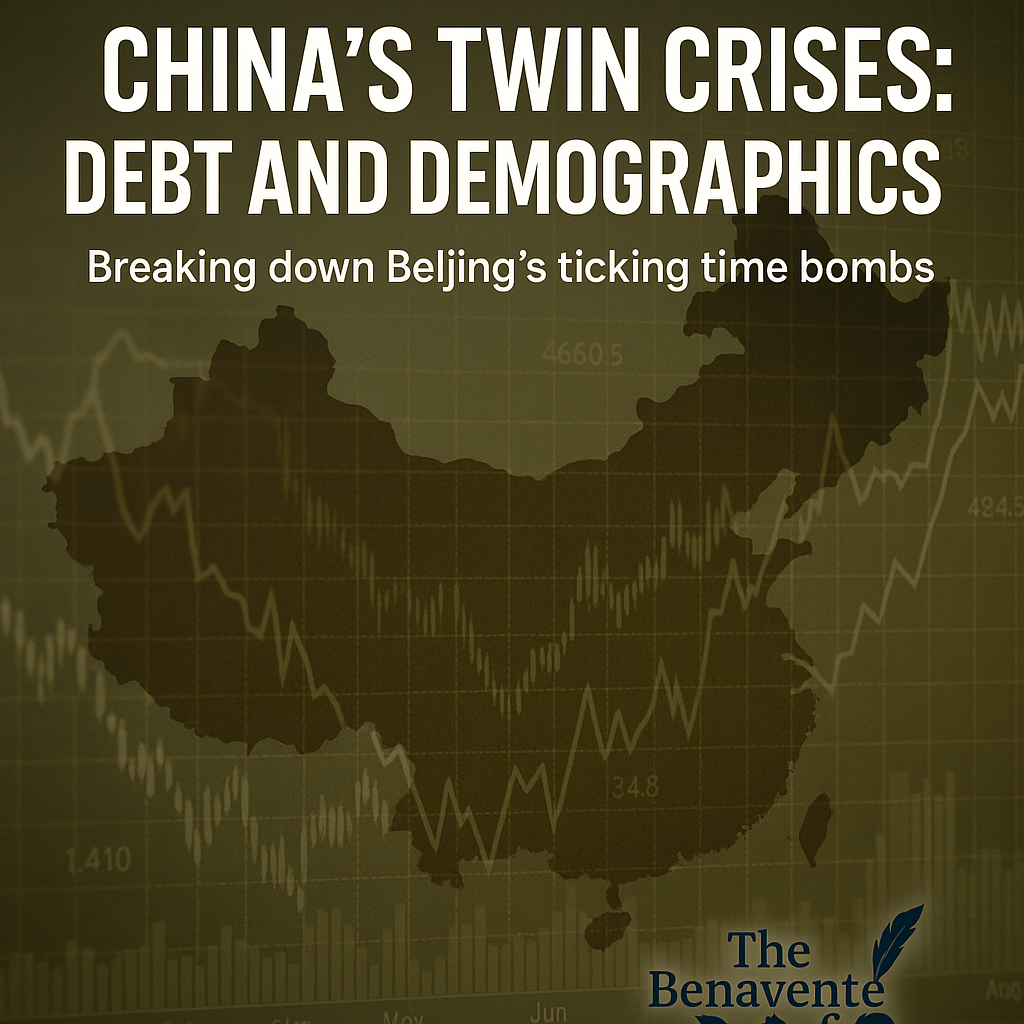China’s Economic Time Bomb: The Human Cost Behind the Numbers
In July 2025, Lei, an independent China analyst on YouTube, broke down what she calls China’s two “ticking time bombs”: unsustainable debt and a demographic collapse. - Rafael Benavente

China’s Twin Crises: Debt and Demographics — A Sobering Breakdown
By [Your Name] | Credit: Lei's YouTube Channel
🎥 Watch the original video by Lei — an incredible voice for truth and clarity in China analysis.
In July 2025, Lei, an independent China analyst on YouTube, broke down what she calls China’s two “ticking time bombs”: unsustainable debt and a demographic collapse. Her analysis is not only compelling but alarming — and it’s backed by hard data from China’s own central authorities.
💣 Time Bomb #1: Debt Beyond Control
As of mid-2025, China’s total societal debt stood at a jaw-dropping ¥455 trillion — that’s about $63 trillion USD. This includes:
- ¥270 trillion in on-balance sheet loans (gov’t, corporate, and household)
- ¥185 trillion in bond market debt
If you assume just a 3% interest rate, China owes ¥13.5 trillion in annual interest payments — 10% of its official GDP of ¥135 trillion. But here’s where things get worse:
🧮 Lei estimates China’s real GDP is 50–67% lower than reported.
If true, up to 20% of actual GDP could be vanishing into interest payments. That would be like the U.S. spending $5 trillion a year just to service debt — with no principal payments.
📉 Collapsing Collateral and Skyrocketing Leverage
The problem isn’t just the amount of debt — it’s also the value of collateral backing it:
- Local government assets? Illiquid.
- Real estate? In freefall.
- Growth? Stagnant or fictional.
Lei estimates China is adding ¥30 trillion in new debt per year, mostly via government borrowing — despite weak economic output and poor private sector demand.
To make things worse, China’s financial sector liabilities now top ¥500 trillion, exceeding total societal debt and reaching 390% of official GDP — or 780% of adjusted GDP. For comparison:
| Metric | United States | China (Official) | China (Adjusted) |
|---|---|---|---|
| Financial Liabilities | $40–45 trillion | ¥500 trillion | ¥500 trillion |
| As % of GDP | ~170% | 390% | ~780% |
This paints a picture of a dangerously overleveraged and fragile financial system.
👶 Time Bomb #2: The Vanishing Population
Debt might be a mathematical crisis, but China’s demographic implosion is existential.
Lei argues that the real population is between 300–500 million, not the official 1.4 billion. She bases this on multiple data points — the most stunning of which is the collapse in primary and kindergarten school enrollment.
🏫 Evidence of Collapse
- Primary schools fell from 553,600 (2000) to 143,000 (2023) — a 74% drop, even though the official population rose 11%.
- Kindergarten closures from 2022 to 2025 are estimated at 23%, and average class size fell 22%.
- Result: a 40–50% collapse in preschool population — even under conservative assumptions.
“You don’t close 400,000 schools unless the students are gone.” — Lei
This is not theory. It's backed by official Ministry of Education data. Provinces like Heilongjiang, Jilin, and Liaoning have shuttered half their elementary schools in a decade.
🧬 So, What Happened?
Lei proposes that COVID’s true death toll in China may be far higher than reported — in the hundreds of millions. Combined with an already declining birth rate and economic dislocation, this paints a bleak picture.
In cities like Shanghai, even affluent districts are closing kindergartens. Preschool enrollment fell by 50% in some areas — confirmed through interviews with former school operators.
“You don’t get a 50% drop in kids unless the parents are gone.”
If correct, the consequences are staggering:
- No workforce to support the elderly
- No consumers to drive growth
- No tax base to repay debt
🎯 The Implications
China is caught in a doom loop:
- A shrinking population reduces consumption and productivity.
- Debt servicing consumes more and more of GDP.
- The financial system becomes more fragile.
- The state borrows more to patch the gap — worsening the problem.
This is not a short-term downturn. It’s a structural collapse.
🧠 Final Thoughts
This analysis by Lei is both chilling and necessary. While mainstream media often sugarcoats China's economic prospects, Lei shines a spotlight on what’s really happening — using China’s own data.
Her YouTube channel deserves your support. She delivers with clarity, courage, and precision.
If this topic interests you, I recommend reading my companion piece on China’s demographic debt spiral here.
By Rafael Benavente
📺 Watch the full video here: YouTube - Lei
👍 Credit: Lei on YouTube — subscribe for more of her top-tier China commentary.
